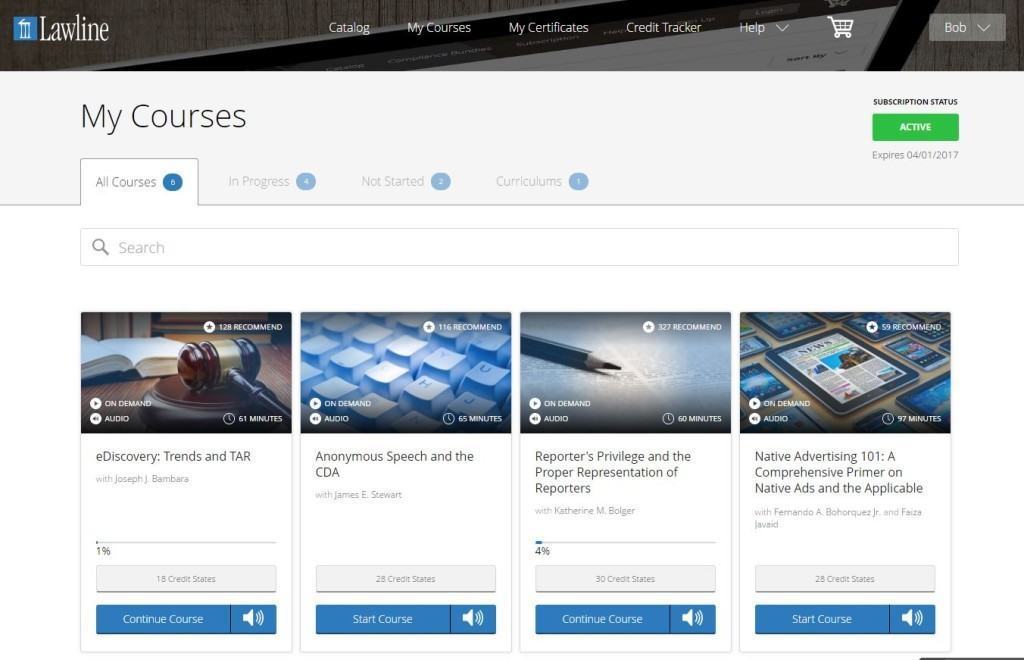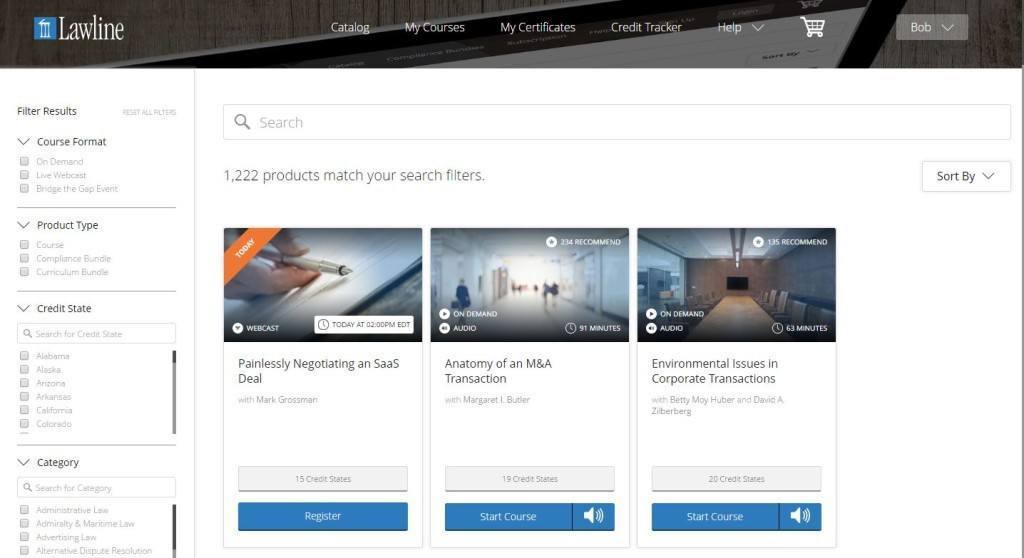It’s been several years since I’ve written anything about Lawline, which I once described as a company that was disrupting the CLE industry. What brings me back to Lawline this week is the company’s roll-out of a major redesign and modernization of its website.
Lawline’s subscription model is simple: $299 a year for unlimited CLE. Unlimited means unlimited, so you can take as many courses as you want and earn as many CLE credits as you like. And you can take them on any computer, tablet or smartphone.
Lawline has about 1,000 courses, available as on-demand video and downloadable audio for offline listening. It also presents live webcasts. While the total number of courses changes little, Lawline is continually expiring older courses and adding new ones — some 20 new courses every month, it says.
But the underlying website was showing signs of age. In an interview last week, founder David Schnurman told me that one of his concerns with the site was that it wasn’t easy for customers to manage their accounts, track their credits and completed courses, or search their certificates.
Yesterday, Lawline unveiled a top-to-bottom redesign, not just of its look and feel, but also under the hood. Most notably, the site now uses a responsive design, which means that its appearance adapts to the display of your device, making for optimal viewing on computers, tablets and smartphones.
“Our core purpose is personal freedom,” Schnurman told me. “We want to make it easy for attorneys to learn and advance in their fields or earn credits.”
Among the changes to the site:
- Custom toolbar. The former site had a generic toolbar that was the same on every page. Now, when a user logs in, the toolbar is matched to your account, so you can easily navigate to My Courses, My Certificates, your credit tracker and your personal account information.
- Simplified credit tracking. In the former site, it could be difficult for users to track their CLE credits. Now, the “Credit Tracker” tab takes you to a page where you can view credits for your current reporting period and past reporting periods. If you’re not sure about your state’s reporting period or credit requirements, a new tool lets you check.
- Course tracking. One of his customers’ top questions, Schnurman says, is to ask how many courses they’ve completed and what they were. The new My Courses page shows all of a user’s courses and also has tabs to show only courses that are in progress, not started, completed or bundled (more below on bundles). Users can scroll through all their courses or search for specific ones.
- Certificate tracking. The former site simply listed a user’s certificates but they could not be searched. For longer-term customers with a number of certificates, this was a problem, Schnurman says. Now the site allows users to search their certificates as well as to filter them by state and date ranges.
- Subscription indicator. A button on every page shows your subscription status and warns you if its expiration is approaching.
Lawline has also redone its course catalog. Each course now displays as a “course card” with basic information about the course. You can enter search terms to find a course or use filters that now appear along the left side of the course listing. You can filter by product type, credit state, category and credit type.
In addition to single courses, Lawline now offers different bundles, called compliance bundles and curriculum bundles. Compliance bundles are complete, state-specific course packages to meet state CLE requirements. Curriculum bundles are packaged sets of courses that cover various topics such as sports and entertainment law, marijuana law, and data breach and privacy law.
When you log in to Lawline, you begin at the My Courses page, with the course cards for your most recent courses appearing at the top of the page. This lets you pick up where you last left off. Courses that you’ve started show in-progress bars to tell you how far you are through the course.
As you watch a course, you can add Smart Notes. These are saved along with the time and playlist segment in the video so you can later match your note to the spot in the presentation where you made it.
These changes are the “tip of the iceberg,” Schnurman says, adding that he has at least 100 features still on his list to be built out.
“We think of ourselves as a software company and a great content company combined,” Schnurman says.
 Robert Ambrogi Blog
Robert Ambrogi Blog
